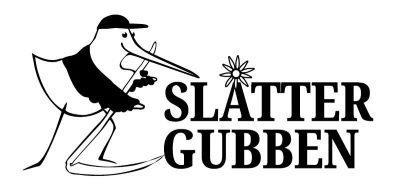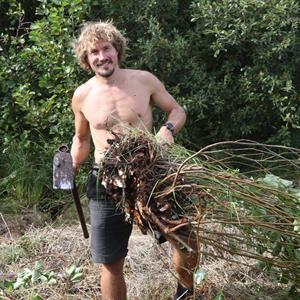Blade hoe small - mounted shaft
Perfect for sapplings and brushes! As a vertical sturdy axe.
- In stock
Description
The blade hoe can be used for chop away brush and sapplings below ground level, weeding and turning the soil in the garden or leveling mixed terrain with roots, stones, soil, etc. A versatile tool!
Blade hoes are widely used abroad instead of shovels. In Sweden, blade hoes have been almost impossible to find. These high-quality Portuguese hoes are excellent tool companions and can be sharpened as sharp as axes. With a fairly blunt edge angle, they can be used with force straight into roots, stumps, etc, so the chips fly! This small blade hoe becomes more like a vertical axe as it has a nice weight to it. At least when it is completely sharp.
We have really fallen in love with the small blade hoe as a tool for permanent clearing of brush, sapplings and small stumps to make a meadow smooth for scything. It is incredibly powerful and always has a good angle towards the ground when standing up. Like a vertical axe, simply put. It works best for sapplings in the range up to 5cm thick. Aspen shoots, lilacs with roots, willow, ash, oak, smaller hazelnut stumps and hazelnut bouquets and more can all be permanently removed under the growthpoint.
Both one and two-handed grip can be used. For brush clearing, it is best to cut the handle to 65-75 cm so the "strike" can go horizontally between your feet without hitting your groin (if you have one). Some preffer even shorter shafts, down to 40cm - especially if you work a lot with one hand. Feel free to carve or grind out a knob the top and give the shaft a bit oval shape for better grip when hands and handle are slippery!
When we clear a meadows from sapplings and brushes the small hoe is our main tool. We do carry a portable anglegrinder to grind it sharp once in a while as you will hit stones and inevetably blunt the edge. A normal axe is sometimes better and good to bring, working with it sitting on your knee. For example cutting some roots where it is more suitable that the cut and force come from right above and when working with sapplings growing just beside stones.
In some cases a tool called extractigator is worth considering and we bring it often as well. It is pretty heavy and unflexible but if the sapplings is not cut before by a brushcutter, they grow dense and are pretty straight and of a uniform size and is not coming from a net of roots (as aspen) - yes then this tool can be winning!
It is worth repeating that to get a meadow that is suitable for scything, handraking and perhaps pulling the hay away with a tarp - you can never clear brushes and sapplings with a brushcutter, it will leave stumps that only grow bigger and continue to produce new shoots every year. They need to be cut below the growthpoint.
The blade hoe is small enough to be carried in a backpack if the handle is shortened to about 50 cm. Perfect tool for building an MTB trail or downhill track for mountain biking, for example.
Incredibly sturdy, the blade itself is about 5 mm thick. The blade is 9.5 cm wide at the edge and 19 cm from the edge to the shaft attachment. Not curved in any direction.
Weight: 1.5kg (hoe+ 70cm handle)
Note: No matter how well the handle is attatched, if you use the hoe long and hard enough, you will need to buy a new handle after extended use.
How to prevent the handle from breaking:
These handles are very strong and can withstand the most powerful strikes without issue. However, they cannot be bent with unlimited force—this is often when the handle breaks. Avoid prying up roots and stones with full force. The risk of breakage decreases with shorter handles. Personally, I’ve come to prefer handles around 50–55 cm—lighter, more maneuverable. I often work while kneeling.
Handles can also break if, during a swing, they accidentally hit something with a "sharp edge" (e.g., a branch or stump edge) before the hoe reaches its target—similar to snapping a stick over your knee.
Spare handles are bought separately and it can be worth considering to have at home!




